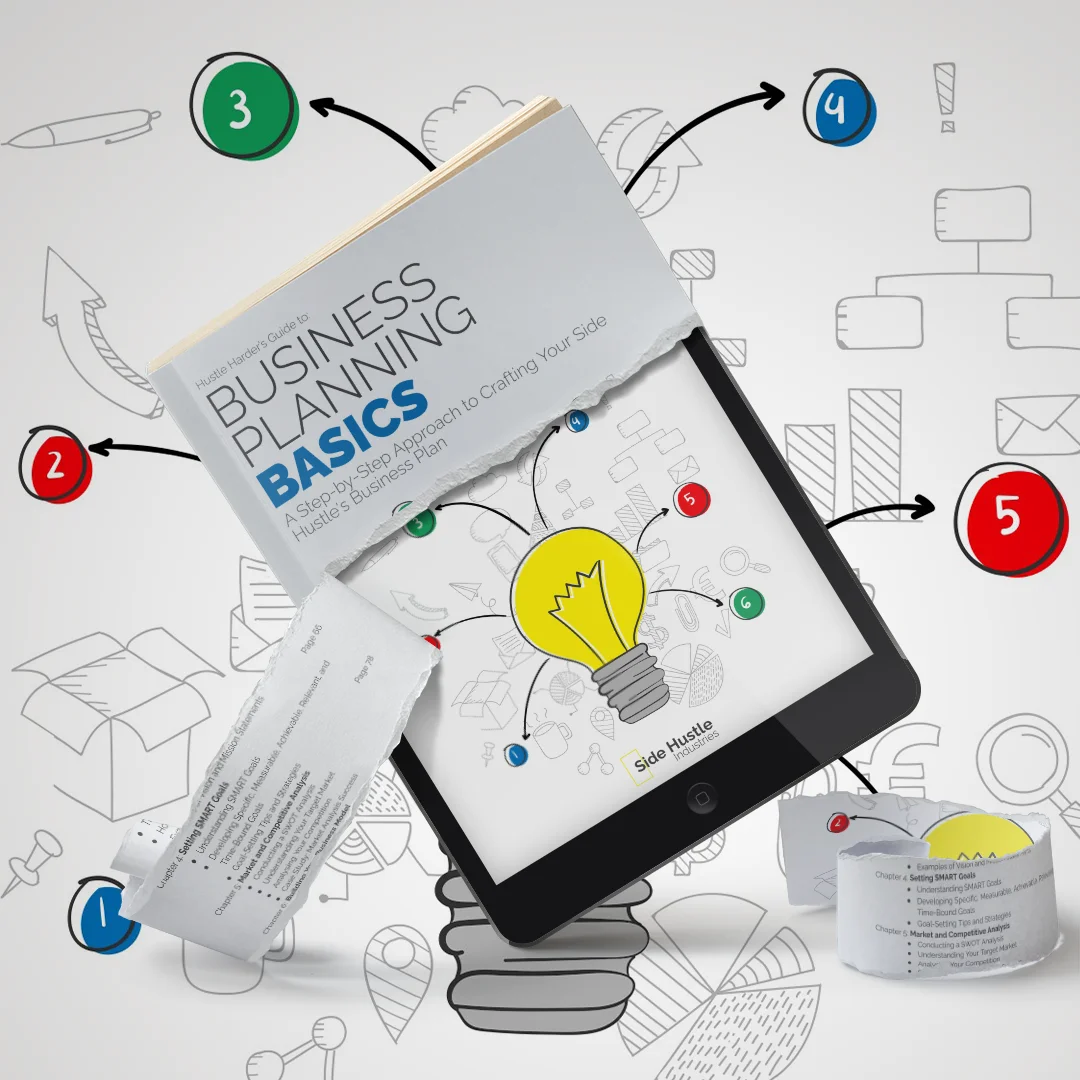
A well-structured business plan is the foundation of your side hustle’s success. It serves as a roadmap, a communication tool for potential investors and partners, and a blueprint for achieving your entrepreneurial goals. In this blog, we will explore the key components of a business plan, guiding you through the structure and content needed to create a compelling and comprehensive document.
Executive Summary
The executive summary is the first section of your business plan, but it’s often the last section you write. This summary provides a concise overview of your entire business plan, offering a glimpse into your side hustle’s vision, mission, and key highlights. It should be compelling, succinct, and engaging, as it’s the section that can grab the reader’s attention.
The executive summary typically includes:
- A brief description of your side hustle and its purpose.
- Your unique selling proposition (USP) or competitive advantage.
- A summary of your market opportunity and target audience.
- Financial highlights, such as revenue projections and funding requirements.
- Key team members and their roles.
- A call to action, specifying what you’re seeking from the reader, whether it’s investment, partnership, or support.
Business Description
This section delves deeper into your side hustle’s identity, providing readers with a clear understanding of what your business is all about. It should include:
- Your business name, legal structure, and contact information.
- A brief history or background of your side hustle, including its origin and any notable achievements.
- Your mission and vision statements, which define your business’s purpose and long-term aspirations.
- A detailed description of your products or services and how they solve customer problems or fulfil needs.
- The specific market or industry you operate in, along with any industry trends or developments relevant to your business.

Market Analysis
The market analysis section is where you demonstrate your understanding of your target market, industry, and competition. It should include:
- A comprehensive analysis of your target market, including its size, demographics, and buying behaviours.
- A competitive analysis, outlining your main competitors, their strengths and weaknesses, and how your side hustle positions itself against them.
- An assessment of market trends and opportunities, highlighting areas where your business can thrive.
Marketing and Sales Strategies
In this section, you’ll outline how you plan to attract and retain customers. It includes:
- Your marketing strategies, including channels, tactics, and budgets.
- Sales strategies, such as your pricing, distribution, and sales process.
- A sales forecast, indicating your expected sales growth over time.
Organization and Management
Here, you introduce your team and provide an overview of your business’s organisational structure. This section includes:
- A description of your key team members, their roles, and their relevant experience.
- Information on your advisory board or mentors, if applicable.
- Your organisational structure, such as hierarchy and reporting lines.
Service or Product Line
This section goes into greater detail about your products or services, explaining how they benefit your customers. It should include:
- Detailed descriptions of your products or services, including their features and benefits.
- Information on your suppliers, their reliability, and any strategic partnerships.
- The research and development involved in creating your offerings.
Funding Request
If you’re seeking financial support from investors or lenders, this section outlines your funding requirements, including:
- The amount of funding you’re requesting.
- How you’ll use the funds.
- Your projected return on investment for investors.
- Your proposed repayment terms for lenders.
Financial Projections
The financial projections section provides a comprehensive look at your side hustle’s financial health. It includes:
- Income statements, which show your projected revenues, costs, and profits over a specific period (typically three to five years).
- Balance sheets, indicating your assets, liabilities, and equity at specific points in time.
- Cash flow statements, outlining your expected cash inflows and outflows.
- Break-even analysis, showing when your business will start making a profit.

Appendix
In the appendix, you can include any additional information that supports the content of your business plan. This may include:
- Resumes of key team members.
- Detailed market research data.
- Legal documents, such as contracts or agreements.
- Additional financial statements or projections.
- Letters of recommendation or testimonials.
- Any other documents or information that provide further context to your plan.
Tailoring Your Plan
It’s essential to remember that not all business plans are the same. The structure and content of your plan should reflect the unique characteristics and needs of your side hustle. While the sections mentioned are common in most business plans, the emphasis, level of detail, and order can vary based on your industry, business model, and target audience.
The Art of Business Planning
Writing a business plan is both a science and an art. While the structure provides a framework for conveying vital information, the artistry comes in crafting a compelling narrative that resonates with your audience. Here are some additional tips to help you create a business plan that stands out:
- Be concise: Avoid jargon and overly technical language. Keep the plan concise and easy to understand.
- Show, don’t tell: Use visuals like charts and graphs to illustrate key points and data.
- Be realistic: Ensure that your financial projections are grounded in research and reflect a realistic path to success.
- Seek feedback: Before finalising your plan, share it with mentors, advisors, or business associates to gain valuable insights and suggestions.
- Update regularly: A business plan isn’t static. Review and update it as your side hustle evolves and new information becomes available.
A well-structured business plan is an invaluable tool for guiding your side hustle to success. By clearly articulating your vision, market opportunities, and strategies, you provide a roadmap for your entrepreneurial journey. The process of creating a business plan also deepens your understanding of your business and helps you communicate your vision to potential investors, partners, and stakeholders. With the right balance of structure and creativity, your business plan becomes a powerful asset in your pursuit of side hustle success.

*Also available on Amazon in Kindle, Soft Cover & Hard Cover formats. —> Click Here.
